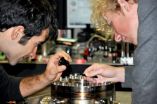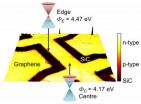(Press-News.org) August 15, 2014 – Patients with low blood levels of vitamin D are at increased risk of death and serious complications after noncardiac surgery, suggests a study in Anesthesia & Analgesia.
"Vitamin D concentrations were associated with a composite of in-hospital death, serious infections, and serious cardiovascular events," according to the new research by Dr Alparslan Turan and colleagues of the Cleveland Clinic. They believe their results warrant further study to see if giving vitamin D supplementation before surgery can reduce the risk of these adverse outcomes.
Lower Vitamin D Levels Linked to Higher Surgical Risk
The researchers analyzed the relationship between vitamin D level and surgical outcomes in approximately 3,500 patients who underwent operations other than heart surgery between 2005 and 2011. Only patients who had available data on vitamin D levels around the time of surgery—from three months before to one month afterward—were included in the study.
The concentration of vitamin D (specifically, 25-hydroxyvitamin D) in blood samples was analyzed as a risk factor for death, cardiovascular events, or serious infections while in the hospital. The analysis included adjustment for other factors such as demographic characteristics, medical conditions, and type and duration of surgery.
Most patients did not meet the recommended 25-hydroxyvitamin D concentration of greater than 30 nanograms per milliliter (ng/mL). The median vitamin D level was 23.5 ng/mL—more than 60 percent of patients were in the range of vitamin D insufficiency (10 to 30 ng/mL). Nearly 20 percent had vitamin D deficiency (less than 10 ng/mL).
"Higher vitamin D concentrations were associated with decreased odds of in-hospital mortality/morbidity," the researchers write. For each 5 ng/mL increase in 25-hydroxyvitamin D level, the combined risk of death, cardiovascular events, or serious infections decreased by seven percent.
Patients at the lowest level of 25-hydroxyvitamin D (less than 13 ng/mL) were at highest risk of death or serious complications. Those with higher vitamin D levels (up to 44 ng/mL) had about half the risk as those in the lowest group. The association with low vitamin D was statistically significant only for cardiovascular complications, although there were "strong trends" for mortality and infections.
Further Study Needed to Determine Cause and Effect
"Vitamin D deficiency is a global health problem," according to Dr Turan and coauthors. In addition to protective cardiovascular and neurological effects, vitamin D plays an important role in the immune system.
The high rates of vitamin D insufficiency and deficiency in the surgical patients studied are consistent with previous findings in the general population. In recent years, studies have suggested that vitamin D levels may affect a wide range of health outcomes.
Patients undergoing surgery are at risk of cardiovascular and infectious complications, both of which may be aggravated by vitamin D deficiency. Previous studies found no increased risk of adverse outcomes related to vitamin D levels in patients undergoing cardiac surgery. It may be that the tissue injury and inflammation associated with heart surgery overwhelms any potential protective effect of vitamin D.
However, Dr Turan and colleagues note that their study had some important limitations of their study—especially the fact that it included only patients who had recent measurements of vitamin D levels. They may represent a less-healthy group, introducing a potential source of selection bias.
The study can't determine whether there is any cause-and-effect relationship between vitamin D levels and the risk of adverse outcomes. Dr Turan and colleagues suggest a formal randomized trial to evaluate whether preoperative vitamin D supplementation can reduce the risk of serious complications and death after surgery.
INFORMATION:
Anesthesia & Analgesia is published by Lippincott Williams & Wilkins, part of Wolters Kluwer Health.
Read the article in Anesthesia & Analgesia.
About Anesthesia & Analgesia
Anesthesia & Analgesia was founded in 1922 and was issued bi-monthly until 1980, when it became a monthly publication. A&A is the leading journal for anesthesia clinicians and researchers and includes more than 500 articles annually in all areas related to anesthesia and analgesia, such as cardiovascular anesthesiology, patient safety, anesthetic pharmacology, and pain management. The journal is published on behalf of the IARS by Lippincott Williams & Wilkins, a division of Wolters Kluwer Health.
About the IARS
The International Anesthesia Research Society is a nonpolitical, not-for-profit medical society founded in 1922 to advance and support scientific research and education related to anesthesia, and to improve patient care through basic research. The IARS contributes nearly $1 million annually to fund anesthesia research; provides a forum for anesthesiology leaders to share information and ideas; maintains a worldwide membership of more than 15,000 physicians, physician residents, and others with doctoral degrees, as well as health professionals in anesthesia related practice; sponsors the SmartTots initiative in partnership with the FDA; and publishes the monthly journal Anesthesia & Analgesia in print and online.
About Wolters Kluwer Health
Wolters Kluwer Health is a leading global provider of information, business intelligence and point-of-care solutions for the healthcare industry. Serving more than 150 countries worldwide, clinicians rely on Wolters Kluwer Health's market leading information-enabled tools and software solutions throughout their professional careers from training to research to practice. Major brands include Health Language®, Lexicomp®, Lippincott Williams & Wilkins, Medicom®, Medknow, Ovid®, Pharmacy OneSource®, ProVation® Medical and UpToDate®.
Wolters Kluwer Health is part of Wolters Kluwer, a market-leading global information services company. Wolters Kluwer had 2013 annual revenues of €3.6 billion ($4.7 billion), employs approximately 19,000 people worldwide, and maintains operations in over 40 countries across Europe, North America, Asia Pacific, and Latin America.maintains operations in over 40 countries across Europe, North America, Asia Pacific, and Latin America. Wolters Kluwer is headquartered in Alphen aan den Rijn, the Netherlands. Its shares are quoted on Euronext Amsterdam (WKL) and are included in the AEX and Euronext 100 indices. Wolters Kluwer has a sponsored Level 1 American Depositary Receipt program. The ADRs are traded on the over-the-counter market in the U.S. (WTKWY).
Follow our official Twitter handle: @WKHealth.
Low vitamin D levels linked to increased risks after noncardiac surgery
Death and serious complications more likely in patients with vitamin D deficiency, study suggests
2014-08-15
ELSE PRESS RELEASES FROM THIS DATE:
Study: Brain imaging shows brain differences in risk-taking teens
2014-08-15
According to the CDC, unintentional injuries are the leading cause of death for adolescents. Compared to the two leading causes of death for all Americans, heart disease and cancer, a pattern of questionable decision-making in dire situations comes to light in teen mortality. New research from the Center for BrainHealth at The University of Texas at Dallas investigating brain differences associated with risk-taking teens found that connections between certain brain regions are amplified in teens more prone to risk.
"Our brains have an emotional-regulation network that ...
Laser makes microscopes way cooler
2014-08-15
Laser physicists have found a way to make atomic-force microscope probes 20 times more sensitive and capable of detecting forces as small as the weight of an individual virus.
The technique, developed by researchers at The Australian National University (ANU), hinges on using laser beams to cool a nanowire probe to minus 265 degrees Celsius.
"The level of sensitivity achieved after cooling is accurate enough for us to sense the weight of a large virus that is 100 billion times lighter than a mosquito," said Dr Ben Buchler from the ANU Research School of Physics and Engineering.
The ...
Adipose-derived stem cells and nerve regeneration
2014-08-15
Stem cell researchers at the Blond McIndoe Laboratory, University of Manchester, UK, led by Dr Adam Reid, present a review of the current literature on the suitability of adipose-derived stem cells in peripheral nerve repair.
Injuries to peripheral nerves are common and cause life-changing problems for patients alongside high social and health care costs for society. Current clinical treatment relies on sacrificing a nerve from elsewhere in the body to provide a nerve graft at the injury site, but much work has been done to develop a bioengineered nerve graft that would ...
Politicians need to address transport taboos, not just new technology, to meet carbon targets
2014-08-15
Transport accounts for 30% of CO2 emissions in the EU, with emissions rising 36% between 1990 and 2007. The research, carried out by Lund University and the University of Surrey a found a need to dissect the widely-held view that new technologies, such as biofuel and improved aircraft design, will result in carbon reduction targets being met.
In the paper, researchers highlight the fact that policy makers are turning to the perceived benefits of such technologies to drive decarbonisation policy, despite contrary evidence. They argue that in order to cut damaging carbon ...
On the edge of graphene
2014-08-15
Researchers at the National Physical Laboratory (NPL) have discovered that the conductivity at the edges of graphene devices is different to that of the central material.
Local scanning electrical techniques were used to examine the local nanoscale electronic properties of epitaxial graphene, in particular the differences between the edges and central parts of graphene Hall bar devices. The research was published in Scientific Reports, an open access publication from Nature Publishing Group.
The researchers found that the central part of the graphene channel demonstrated ...
TUM researchers develop defense against cyberattacks
2014-08-15
Port scanners are programs that search the Internet for systems that exhibit potential vulnerabilities. According to the report published today by journalists at Heise Online, Hacienda is one such port scanning program. The report says that this program is being put into service by the "Five Eyes," a federation of the secret services of the USA, Canada, the UK, Australia and New Zealand. "The goal is to identify as many servers as possible in other countries that can be remotely controlled," explains Dr. Christian Grothoff, Emmy Noether research group leader at the TUM ...
Experts close to perfect in determining truth in interrogations using active question methods
2014-08-15
Washington, DC (August 12, 2014) – Determining deception is a tool of the trade for law enforcement. The Good Cop/Bad Cop routine is etched in our minds as an effective method of finding out the truth. But prior research has shown that lie detecting is a 50/50 shot for experts and non-experts alike. So what exactly can we do to find out the truth? A recent study published in Human Communication Research by researchers at Korea University, Michigan State University, and Texas State University - San Marcos found that using active questioning of individuals yielded near-perfect ...
The beetle's white album
2014-08-15
The physical properties of the ultra-white scales on certain species of beetle could be used to make whiter paper, plastics and paints, while using far less material than is used in current manufacturing methods.
The Cyphochilus beetle, which is native to South-East Asia, is whiter than paper, thanks to ultra-thin scales which cover its body. A new investigation of the optical properties of these scales has shown that they are able to scatter light more efficiently than any other biological tissue known, which is how they are able to achieve such a bright whiteness. ...
Personal, public costs of scientific misconduct calculated
2014-08-15
Much has been assumed about the private and public damage of scientific misconduct. Yet few have tried to measure the costs to perpetrators and to society.
A recent study calculated some of the career impacts, as well as federal funding wasted, when biomedical research papers are retracted. The results appear in the Aug. 15 issue of the journal eLife.
In questioning common assumptions, the study authors determined that scientific misconduct typically, but not always, exacts a personal toll in derailing careers. On the public side, the cost to federal funding sources ...
Previous pulmonary disease linked to increased lung cancer risk in large study
2014-08-15
Links between a number of common respiratory diseases and an increased risk of developing lung cancer have been found in a large pooled analysis of seven studies involving more than 25,000 individuals.
"Associations between various respiratory diseases and lung cancer have been shown in earlier studies, but few of these studies considered multiple respiratory diseases simultaneously," said researcher Ann Olsson, PhD, of the International Agency for Research in Cancer in Lyon, France. "In our pooled analysis of seven case-control studies involving more than 12,500 cases ...
LAST 30 PRESS RELEASES:
Lower doses of immunotherapy for skin cancer give better results
Why didn’t the senior citizen cross the road? Slower crossings may help people with reduced mobility
ASH 2025: Study suggests that a virtual program focusing on diet and exercise can help reduce side effects of lymphoma treatment
A sound defense: Noisy pupae puff away potential predators
Azacitidine–venetoclax combination outperforms standard care in acute myeloid leukemia patients eligible for intensive chemotherapy
Adding epcoritamab to standard second-line therapy improves follicular lymphoma outcomes
New findings support a chemo-free approach for treating Ph+ ALL
Non-covalent btki pirtobrutinib shows promise as frontline therapy for CLL/SLL
University of Cincinnati experts present research at annual hematology event
ASH 2025: Antibody therapy eradicates traces of multiple myeloma in preliminary trial
ASH 2025: AI uncovers how DNA architecture failures trigger blood cancer
ASH 2025: New study shows that patients can safely receive stem cell transplants from mismatched, unrelated donors
Protective regimen allows successful stem cell transplant even without close genetic match between donor and recipient
Continuous and fixed-duration treatments result in similar outcomes for CLL
Measurable residual disease shows strong potential as an early indicator of survival in patients with acute myeloid leukemia
Chemotherapy and radiation are comparable as pre-transplant conditioning for patients with b-acute lymphoblastic leukemia who have no measurable residual disease
Roughly one-third of families with children being treated for leukemia struggle to pay living expenses
Quality improvement project results in increased screening and treatment for iron deficiency in pregnancy
IV iron improves survival, increases hemoglobin in hospitalized patients with iron-deficiency anemia and an acute infection
Black patients with acute myeloid leukemia are younger at diagnosis and experience poorer survival outcomes than White patients
Emergency departments fall short on delivering timely treatment for sickle cell pain
Study shows no clear evidence of harm from hydroxyurea use during pregnancy
Long-term outlook is positive for most after hematopoietic cell transplant for sickle cell disease
Study offers real-world data on commercial implementation of gene therapies for sickle cell disease and beta thalassemia
Early results suggest exa-cel gene therapy works well in children
NTIDE: Disability employment holds steady after data hiatus
Social lives of viruses affect antiviral resistance
Dose of psilocybin, dash of rabies point to treatment for depression
Helping health care providers navigate social, political, and legal barriers to patient care
Barrow Neurological Institute, University of Calgary study urges “major change” to migraine treatment in Emergency Departments
[Press-News.org] Low vitamin D levels linked to increased risks after noncardiac surgeryDeath and serious complications more likely in patients with vitamin D deficiency, study suggests



